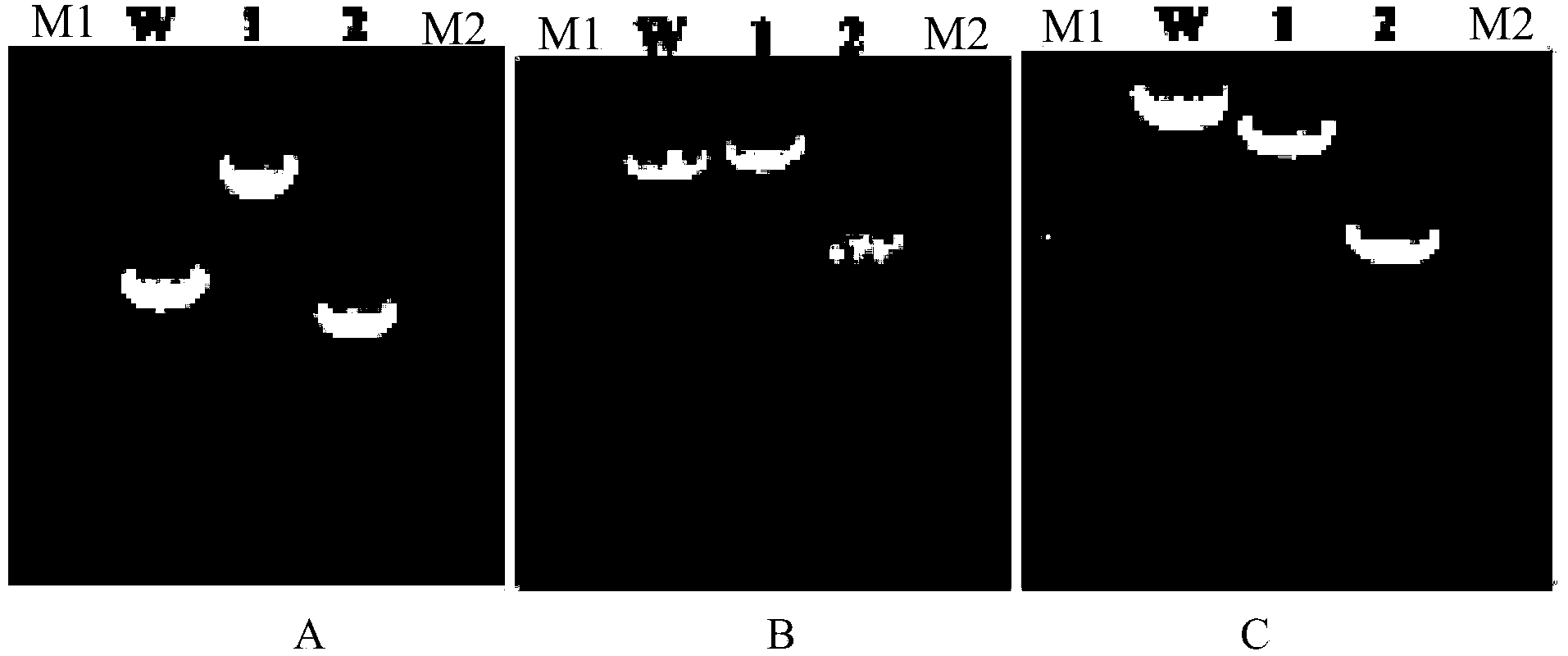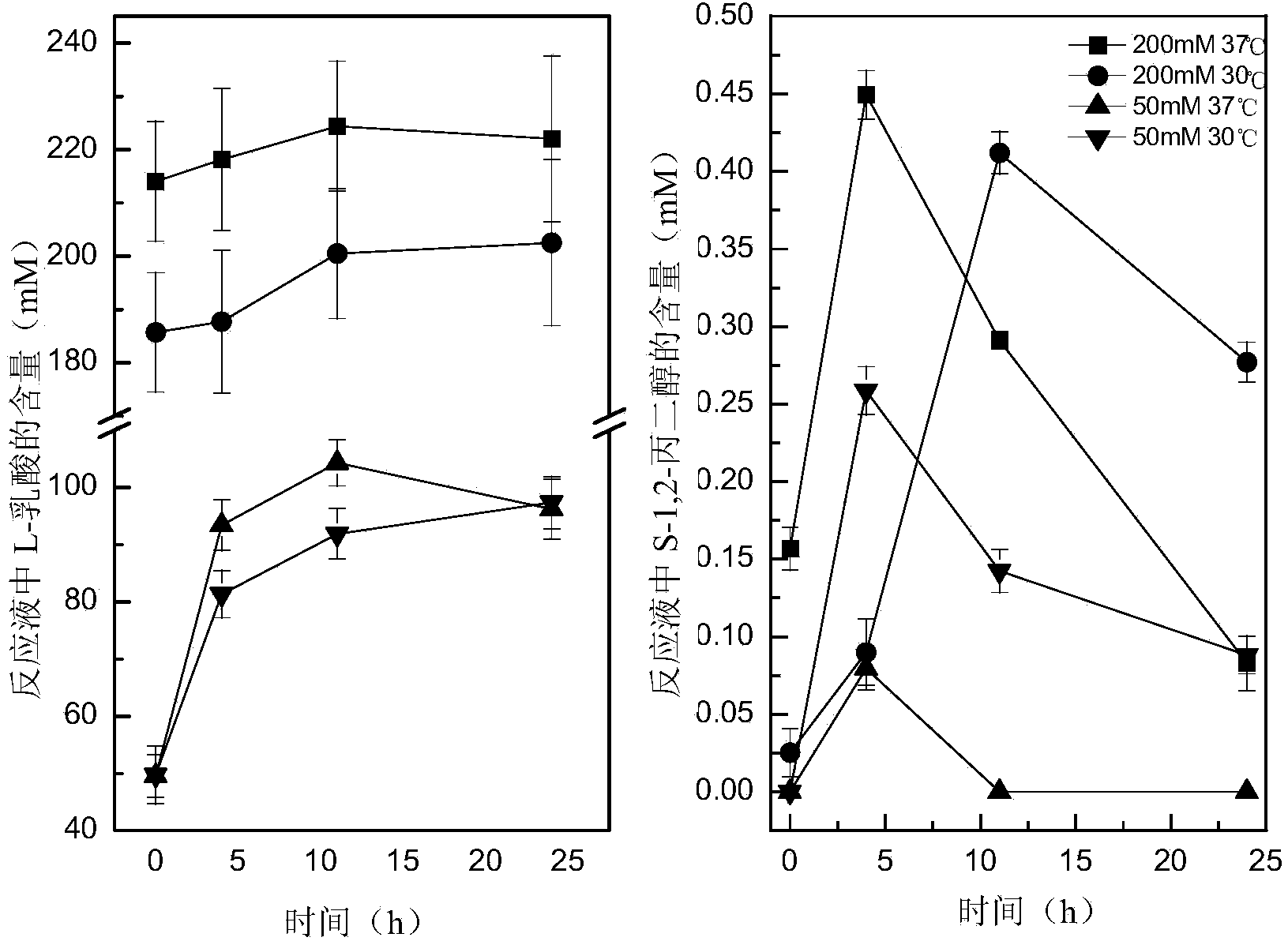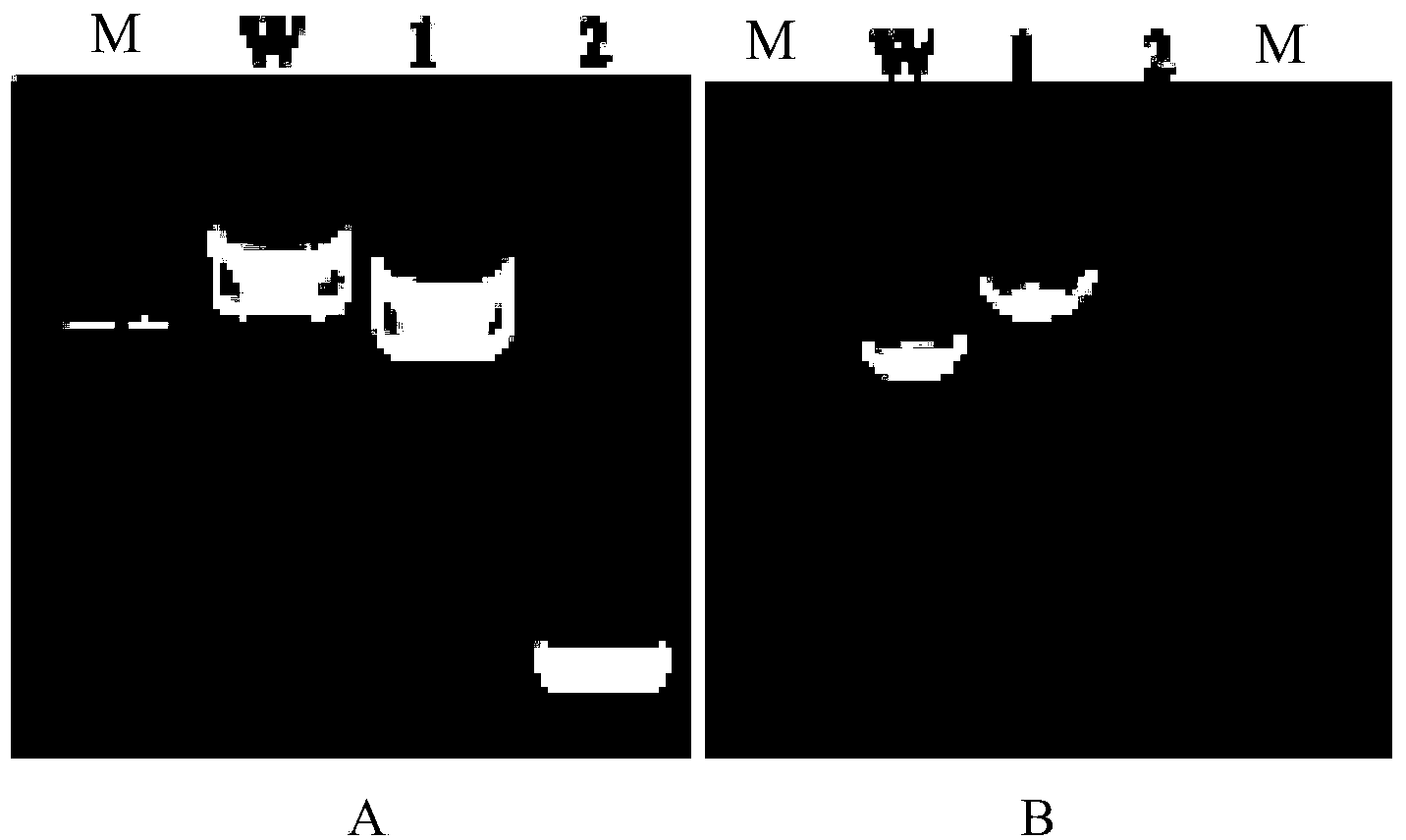Recombinant Escherichia coli for synthesizing S-1,2-propanediol from L-lactic acid and construction method thereof
A technology for recombining Escherichia coli and Escherichia coli, which is applied in the field of microorganisms and can solve problems that have not been applied industrially
- Summary
- Abstract
- Description
- Claims
- Application Information
AI Technical Summary
Problems solved by technology
Method used
Image
Examples
Embodiment 1
[0060] Example 1. Construction and functional identification of recombinant Escherichia coli using L-lactic acid to synthesize S-1,2-propanediol
[0061] 1. Construction and functional identification of recombinant Escherichia coli BWPDO1
[0062] 1. Construction of recombinant Escherichia coli BWPDO1
[0063]According to the synthesis of S-1,2-propanediol using L-lactic acid, three key enzymes involved in the catalysis are identified: Propionyl-CoA transferase (Pct, amino acid sequence is sequence 14) catalyzes the conversion from L-lactic acid to L-lactate Acyl-CoA reaction, CoA-dependent succinate semialdehyde dehydrogenase (PdcD, amino acid sequence is sequence 13) catalyzes the pathway from L-lactyl-CoA to L-lactaldehyde and 3-hydroxypropionate dehydrogenase (MmsB , the amino acid sequence is sequence 12) to catalyze the reaction of L-lactaldehyde to finally generate S-1,2-propanediol.
[0064] Design idea: knock out the lldD gene (sequence 5) of Escherichia coli BW2511...
PUM
 Login to View More
Login to View More Abstract
Description
Claims
Application Information
 Login to View More
Login to View More - R&D
- Intellectual Property
- Life Sciences
- Materials
- Tech Scout
- Unparalleled Data Quality
- Higher Quality Content
- 60% Fewer Hallucinations
Browse by: Latest US Patents, China's latest patents, Technical Efficacy Thesaurus, Application Domain, Technology Topic, Popular Technical Reports.
© 2025 PatSnap. All rights reserved.Legal|Privacy policy|Modern Slavery Act Transparency Statement|Sitemap|About US| Contact US: help@patsnap.com



